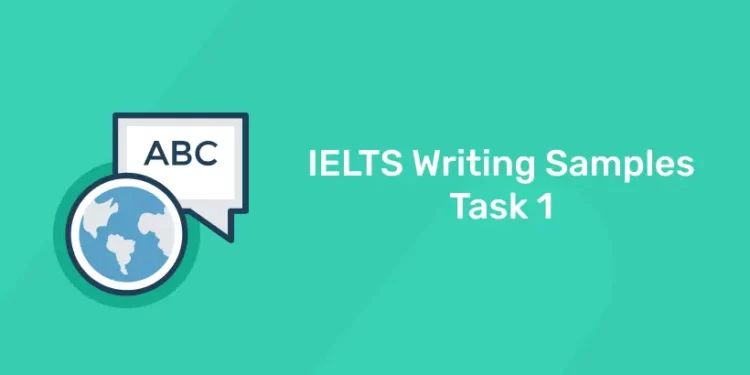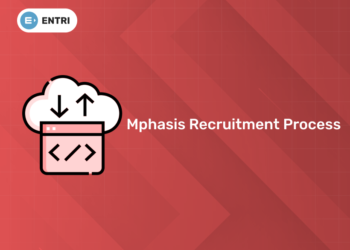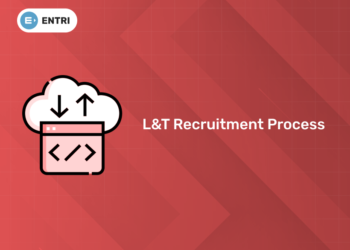Table of Contents
The IELTS Writing Task 1 is a key part of the Academic Writing Test, requiring candidates to summarize and describe visual data such as graphs, charts, tables, maps, or processes. This task evaluates your ability to identify key trends, comparisons, and important features of the given information within a short, structured response. For many test-takers, mastering this task can be challenging, but with practice and the right approach, you can achieve a high band score. In this blog, we’ll explore a range of IELTS Writing Task 1 sample responses to give you a clearer idea of what’s expected at different band levels, along with tips for improving your performance.
Master the IELTS Exam with Online Coaching – Enroll Today!
Introduction
An IELTS Writing sample is a practice or model response provided to help candidates understand the requirements of the IELTS Writing test. These samples showcase how to approach the writing tasks, demonstrate expected writing quality, and provide examples of responses at different band levels. IELTS Writing samples are useful for candidates preparing for the test as they illustrate the level of detail, organization, and language proficiency needed to achieve higher scores.
IELTS Writing Samples Task 1
In IELTS Writing Task 1, candidates are asked to write a response based on a visual representation of information, such as:
- Graphs (line, bar, pie)
- Charts and tables
- Maps
- Processes or diagrams
This task is part of the Academic version of the IELTS exam, and it assesses your ability to describe trends, compare data, summarize information, and explain processes in a clear, concise, and structured manner. Your task is to describe the main features of the data, make comparisons where relevant, and provide an overview of the information presented. You are expected to write at least 150 words in around 20 minutes.
Understanding IELTS Writing Task 1
IELTS Writing Task 1 is an important part of the IELTS Academic Writing test. In this task, candidates are required to write a descriptive response to a visual representation of information. These visual representations may include:
- Graphs (line, bar, pie charts)
- Tables
- Diagrams or flowcharts
- Maps
- Processes (step-by-step descriptions of how something works)
Key Aspects of IELTS Writing Task 1:
- Descriptive Writing: The main goal is to describe and summarize the information presented in the visual data. You are expected to report the main features, trends, or comparisons, without inserting personal opinions.
- Word Limit: You need to write at least 150 words in about 20 minutes. Writing less than 150 words can result in a lower band score.
- Types of Data Representation: The task may ask you to compare changes over time (e.g., in a line graph), highlight differences between categories (in a bar chart or table), or describe how a process works (in a diagram or flowchart).
- Structure of the Response:
- Introduction: A paraphrased description of the visual data.
- Overview: A summary of the main trends or key features.
- Details/Body Paragraphs: More detailed comparisons or descriptions of data, trends, and important features.
- Formal Writing Style: You must maintain a formal tone, avoiding personal pronouns and informal expressions. Clarity and precision in language are crucial.
- Time Management: Since Task 2 is worth more marks, you need to manage your time effectively, giving about 20 minutes to Task 1.
- Scoring Criteria: Your response is graded on four main criteria:
- Task Achievement: How well you address the prompt and describe the information.
- Coherence and Cohesion: The logical flow and organization of ideas.
- Lexical Resource: Range and accuracy of vocabulary.
- Grammatical Range and Accuracy: Use of varied grammatical structures and correct grammar.
Common Challenges:
- Interpreting Data: Candidates may struggle with understanding the data correctly or choosing the right features to highlight.
- Time Constraints: Writing a well-organized, detailed response within 20 minutes can be difficult.
- Avoiding Repetition: Some candidates may repeat vocabulary or sentence structures instead of varying their language.
Master the IELTS Exam with Online Coaching – Enroll Today!
IELTS Writing Task 1 Band 9 Samples
A Band 9 sample response in IELTS Writing Task 1 demonstrates a highly proficient and well-organized approach to describing and summarizing visual data. To achieve a Band 9, candidates must meet the highest standards in task achievement, coherence, lexical resource, and grammatical range and accuracy. Here’s a breakdown of what makes a Band 9 response exceptional, along with examples.
Key Characteristics of Band 9 Responses:
Full Task Achievement:
- Complete Description: The candidate thoroughly addresses all aspects of the task, identifying and describing all key features or trends in the visual data.
- Accurate Information: The response contains accurate information that is fully relevant to the chart, graph, or diagram.
- Clear Overview: The candidate provides a clear and concise overview of the main trends, comparisons, or changes in the data.
Excellent Coherence and Cohesion:
- Logical Structure: The response follows a logical, well-organized structure, with a clear introduction, overview, and detailed body paragraphs.
- Smooth Transitions: The use of linking words and phrases (e.g., “in contrast,” “similarly,” “however,” “overall”) ensures a smooth flow of ideas between sentences and paragraphs.
- Paragraphing: The information is well-organized into clear paragraphs, with each paragraph focusing on a specific aspect of the data.
Sophisticated Lexical Resource:
- Wide Range of Vocabulary: The response uses a wide range of precise vocabulary that is appropriate for describing data and trends (e.g., “fluctuations,” “steadily increased,” “a dramatic rise”).
- No Repetition: There is minimal repetition of words and phrases, and synonyms or paraphrasing are used effectively.
- Natural Expression: The vocabulary choices are natural and idiomatic, showing a strong command of formal, academic English.
Grammatical Range and Accuracy:
- Variety of Sentence Structures: The response features a wide range of sentence types, including complex and compound sentences, relative clauses, and passive structures.
- Grammatical Accuracy: There are no grammatical errors, and the candidate uses correct verb tenses, subject-verb agreement, and other structures consistently.
- Natural Flow: Sentences are varied and sophisticated, contributing to a natural and academic tone.
Example of a Band 9 Response:
Task Example: The bar chart below shows the average monthly spending on children’s sports in a country and the number of children who participated in three different sports between 2008 and 2014. Summarize the information by selecting and reporting the main features, and make comparisons where relevant.
Band 9 Sample Response:
Introduction: The bar chart illustrates the average monthly expenditure on children’s sports, while the line graph compares the number of children who participated in three different sports (football, swimming, and athletics) between 2008 and 2014.
Overview: Overall, the spending on children’s sports steadily increased over the period, while participation in football remained the highest. In contrast, athletics saw the most dramatic rise in the number of participants, particularly after 2010.
Details: In 2008, the average monthly spending on children’s sports was approximately £20. This figure gradually rose each year, reaching around £32 in 2014. Meanwhile, football consistently had the highest number of participants, starting at around 8 million in 2008 and fluctuating slightly over the next few years, ending at nearly the same level in 2014.
Swimming experienced a steady increase in participation, rising from 2 million children in 2008 to nearly 4 million by 2014. In contrast, athletics had the lowest participation in 2008, with fewer than 1 million children involved. However, this number rose dramatically after 2010, peaking at around 5 million participants by 2012, before leveling off in the final two years.
Detailed Comparison: By 2014, although football remained the most popular sport, both swimming and athletics had seen considerable growth in participation. Athletics, in particular, experienced the sharpest increase between 2010 and 2012, overtaking swimming by 2011.
Why This is a Band 9 Response:
- Task Achievement: All aspects of the charts are addressed, with accurate and clear descriptions of both the spending trends and the participation rates in various sports. Key features are identified, and meaningful comparisons are made.
- Overview: A concise and clear summary of the main trends is provided in the second paragraph.
- Coherence and Cohesion: The ideas flow logically, and there are clear links between sentences and paragraphs. Cohesive devices are used effectively.
- Lexical Resource: The vocabulary is diverse and precise, avoiding repetition. Words like “fluctuating,” “dramatically,” and “gradually” are used to describe trends accurately.
- Grammatical Range and Accuracy: The response includes a range of complex sentence structures (e.g., “While participation in football remained the highest…”), and there are no errors in grammar or punctuation.
Tips for Achieving a Band 9:
- Paraphrase the task prompt effectively in the introduction.
- Include a clear and concise overview in the second paragraph.
- Use a wide range of vocabulary to describe trends (e.g., increase, decrease, remain constant, peak, fluctuate).
- Vary your sentence structures, using both simple and complex forms.
- Organize your ideas logically into paragraphs that address different aspects of the visual data.
Master the IELTS Exam with Online Coaching – Enroll Today!
How to Analyze and Improve Your IELTS Writing Task 1
1: Most university students ........................ on campus in their first year.
Improving your IELTS Writing Task 1 score requires understanding your current strengths and weaknesses and working methodically on each aspect of your response. Below are steps and strategies for analyzing your performance and tips to help you improve.
1. Analyze Task Achievement
What to Analyze:
- Did you accurately describe all the important trends, patterns, or key features in the visual data?
- Did you summarize the main points without including irrelevant details or personal opinions?
- Is your response at least 150 words?
How to Improve:
- Understand the Prompt: Make sure you fully understand the type of visual information presented (graphs, charts, tables, processes, etc.) and identify the key points before you start writing.
- Identify Key Trends and Features: Highlight or underline the major trends, comparisons, and contrasts in the data before you begin your response.
- Avoid Personal Interpretation: Stick to factual descriptions and avoid inserting opinions or explanations that are not shown in the data.
Practice: Analyze sample tasks and identify the key points. Then write a summary of these points within the word limit.
2. Examine Coherence and Cohesion
What to Analyze:
- Does your response have a clear structure with an introduction, overview, and detailed description?
- Are your ideas logically organized into paragraphs?
- Do you use linking words and phrases (e.g., “in contrast,” “meanwhile,” “similarly”) to connect ideas?
How to Improve:
- Clear Structure: Follow a consistent structure:
- Introduction: Paraphrase the task prompt.
- Overview: Summarize the key features and trends.
- Body Paragraphs: Provide details with logical organization.
- Use Cohesive Devices: Use linking words and transitions to guide the reader through your description (e.g., “As shown in the graph,” “The number increased steadily from X to Y”).
- Paragraphing: Break your description into separate paragraphs. For example, one paragraph can focus on an overall trend, while the other provides detailed comparisons.
Practice: Rewrite previous tasks and focus on adding cohesive devices. Organize your response into clear paragraphs and check if each paragraph focuses on a specific aspect of the data.
3. Evaluate Lexical Resource
What to Analyze:
- Do you use a wide range of vocabulary to describe the data?
- Are you repeating words or phrases unnecessarily?
- Is your word choice precise and appropriate for the task?
How to Improve:
- Expand Your Vocabulary: Learn a variety of words and phrases to describe trends (e.g., “significant increase,” “slight decline,” “remained constant,” “peaked at”).
- Avoid Repetition: Use synonyms and paraphrasing to avoid repeating the same words.
- Practice Precision: Use specific and accurate language for describing the data (e.g., “rose by 20%” instead of “went up”).
Practice: Write sample descriptions using different charts and diagrams, focusing on using varied vocabulary. Collect lists of synonyms and phrases to help with descriptions (e.g., “sharp rise,” “gradual drop”).
4. Analyze Grammatical Range and Accuracy
What to Analyze:
- Are you using a variety of sentence structures (simple, compound, and complex)?
- Are there any grammatical errors (e.g., incorrect tenses, subject-verb agreement issues)?
- Is your punctuation correct?
How to Improve:
- Use Varied Sentence Structures: Mix simple, compound, and complex sentences in your writing. For example:
- Simple sentence: “The number of visitors increased steadily.”
- Compound sentence: “The number of visitors increased steadily, but the sales remained flat.”
- Complex sentence: “Although the number of visitors increased steadily, the sales remained flat.”
- Correct Verb Tenses: Use appropriate tenses when describing data over time (e.g., past tense for historical data, present perfect for trends continuing into the present).
- Avoid Grammatical Errors: Practice focusing on subject-verb agreement, verb tenses, and articles. Use punctuation correctly to separate ideas and provide clarity.
Practice: Rewrite previous essays, paying attention to varying sentence structures and fixing grammatical mistakes. Ask someone to review your writing or use a grammar-checking tool for feedback.
5. Review Band Descriptors
What to Analyze:
- Compare your writing to the IELTS band descriptors (Task Achievement, Coherence and Cohesion, Lexical Resource, and Grammatical Range and Accuracy).
- Identify which band your writing aligns with in each category (Band 5, 6, 7, 8, or 9).
How to Improve:
- Set Goals: After identifying where you are in each category, set realistic goals. For example, if you are scoring Band 6 in Task Achievement, focus on fully addressing all aspects of the task.
- Self-Assessment: Practice using the band descriptors to assess your own writing or ask for feedback from a teacher or tutor.
Practice: Compare your writing to Band 9 sample responses. Identify what makes the samples exceptional and focus on implementing similar techniques in your own writing.
6. Practice with Time Management
What to Analyze:
- Are you able to complete the task within the 20-minute time frame?
- Do you have enough time to review your work for errors?
How to Improve:
- Practice Under Timed Conditions: Set a timer and write your response within 20 minutes. This will help you simulate real test conditions.
- Plan Before You Write: Spend 2-3 minutes analyzing the data and planning your response. This will make the writing process smoother and more efficient.
Practice: Take timed mock tests. Gradually reduce the time you spend planning and writing so you can complete the task comfortably within the time limit.
Master the IELTS Exam with Online Coaching – Enroll Today!
Ace Your IELTS Exam with Confidence!
Unlock your potential with our expert-led IELTS preparation course. Achieve your dream score and open doors to global opportunities!
Start Your IELTS Journey Today!Frequently Asked Questions
What is IELTS Writing Task 1?
IELTS Writing Task 1 is part of the Academic IELTS exam where candidates are asked to describe and summarize visual information such as graphs, charts, tables, maps, or diagrams. The response must be at least 150 words, and candidates are expected to identify key features and trends in the data.
How can IELTS Writing Task 1 samples help me improve?
IELTS Writing Task 1 samples serve as practice material, showing how to structure responses, use appropriate vocabulary, and describe visual data effectively.
What is the best way to structure a response for IELTS Writing Task 1?
A well-structured response includes:
- Introduction: Paraphrase the task prompt.
- Overview: Summarize the key trends or main features.
- Body Paragraphs: Provide detailed descriptions of the visual data, making comparisons and highlighting significant changes where relevant.
What types of visuals are commonly used in IELTS Writing Task 1?
IELTS Writing Task 1 typically includes visual information like line graphs, bar charts, pie charts, tables, maps, and diagrams. You may be asked to describe trends over time, compare different categories, or explain processes and changes.










